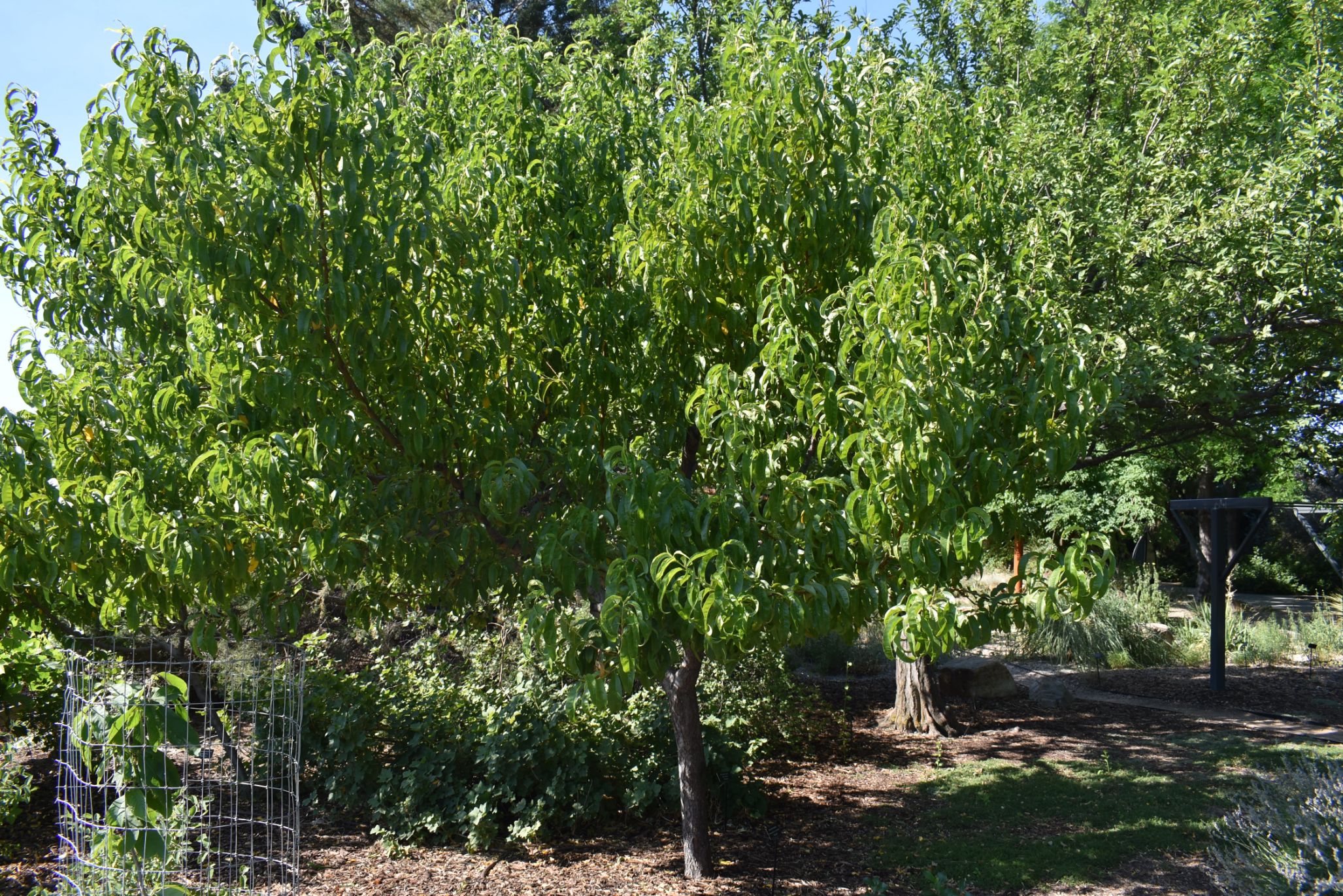Plant Details:
Plant Type: Deciduous Tree
Plant Family: Rosaceae
Plant Description: This variety of nectarine produces large, freestone nectarines with yellow flesh and blushed red skin. The fruit is like a peach but without the fuzz and can be eaten fresh or preserved. All nectarines do not require cross pollination. Spring brings abundant bright pink flowers. The leaves are mid green and lance-shaped. Fall weather turns the leaves a bright yellow before they fall. Though not a large tree, it will produce fruit abundantly. Thin out the fruit in late-spring to keep the tree healthy and to produce large fruit.
Maintenance:
Maintenance Type: Tree - Fruit
Plant Care: Tree - Fruit (single-stemmed woody plants cultivated for their edible fruit): Prune regularly to promote health, provide air circulation, maintain a desirable shape, and to remove dead or damaged branches. Pruning is best done in late winter to early spring. Pruning techniques vary depending on tree species. Understand the needs of each tree type before pruning.
Provide adequate water and nutrients to aid in fruit development. Thin fruit as necessary to avoid excessive stress on the tree, especially on apple and peach trees.
Fruit trees will require pest control to reduce damage to fruit and to keep the tree healthy. Find out the appropriate pest control methods for the species before attempting to control pests.
Plant Attributes:
Mature Size: 12-14' tall and wide
Utah Native: No
Plant Select: Unknown
Pollinator Friendly: Yes
Localscapes: Tree, Foundation Plant, Perimeter Plant
Foliage Interest: No
Foliage Colors: Green
Bloom Colors: Pink
Bloom Seasons: Spring
Bloom Period: Apr - May
Growing Conditions:
Hardiness Zone: 5 to 9
Light Requirement: Full Sun (6+ hrs sun)
Irrigation Requirement:  Moderate (1/2" every 7-10 days)
Moderate (1/2" every 7-10 days)
 Moderate (1/2" every 7-10 days)
Moderate (1/2" every 7-10 days)
Salt Tolerant: Unknown
Deer Tolerant: Unknown
Garden Location:
-
Neighborhood Landscapes
- Harvest Haven




